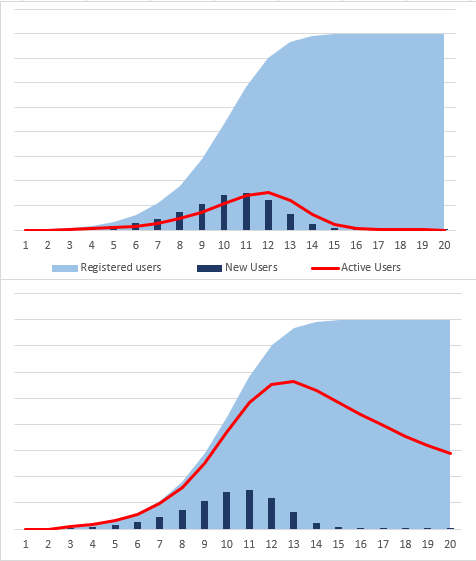- ARPDAUPosted 12 years ago
- What’s an impressive conversion rate? And other stats updatesPosted 12 years ago
- Your quick guide to metricsPosted 12 years ago
PvP could increase game revenue by 510%

This post originally took a different form as a longer guest post. However, after publishing we learned that the content was largely taken from a presentation by Kongregate.
We’ve changed the post to reflect the source of the information more clearly, by embedding the original presentation that the data was taken from, and slimming down the text. Our sincere apologies go to Kongregate for not recognising this sooner.
How could player vs. player combat (PvP) improve your game’s revenue? Data from Kongregate suggests that incorporating a PvP mode could make a significant impact. Embedded below is a presentation from Digital Taipei 2013 on Maximizing Player Retention and Monetization in Free-to-Play Games with a Comparative Analysis of Asian & Western F2P Games.
PvP doubles your money
Kongregate’s 2012 study into player spending behaviour shows a clear trend. Players are more likely to spend money if they can engage in player vs player mode. Whereas life-time ARPPU for single-player games cluster around $5-$10, PvP games range $20-$350.
At the very least, developing a multiplayer game will double your revenue.
PvP really takes the spotlight in the RPG genre. Considering an engaged player base, +50 play sessions, multiplayer RPGs have x5 ARPU than single-player RPG games and x25 ARPU than single-player non RPG games.
ARPU stats |
||
| Single-player | Multiplayer | |
| RPG | $0.10 | $0.51 |
| Non-RPG | $0.02 | $0.05 |
Player vs player boosts revenue 250% in non RPGs and to 510% in RPGs.
Design powers revenue
When designing your PvP mode there are some important differences you should bear in mind.
Asynchronous PvP shows x2.5 ARPU than synchronous play. Also note that when you have both synchronous and asynchronous PvP, not only ARPU stays high but you broaden the percentage of engaged players and top the percentage of buyers. Again, the more options you give players, the better it is for you too.
Asynchronous is better than synchronous because it allows players to play at their own pace and convenience.
Multiplayer games have x5 to x13 ARPU versus single-player games.
The bottom line is this: revenue goes up when you give players more freedom to enjoy the game.











